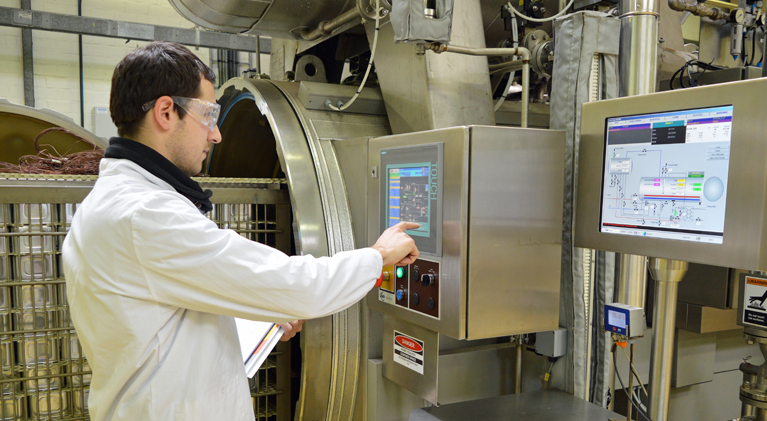In the food industry, thermal processing is vital for safety, shelf life extension, and quality improvement. This article thoroughly examines the fundamental principles, its role as a critical control point (CCP), and the current advancements and challenges. Covering heat transfer basics, innovative solutions for issues like microbial resistance and enzyme inactivation, the article provides insights into the complexities of thermal processing. It also discusses emerging technologies, industry trends, and future developments, providing a comprehensive view of the evolving landscape of food preservation.
I. Food Thermal Processing
Thermal processing, a fundamental method in food preservation, plays a pivotal role in ensuring food safety, extending shelf life, and enhancing overall food quality. Its significance lies in achieving microbial destruction, enzyme inactivation, and quality enhancement, positioning it as a critical control point (CCP) in the food industry.
- Importance of Microbial Destruction: Designed to eliminate or reduce microorganisms in food, thermal processing prevents foodborne illnesses and spoilage. This essential step maintains food safety and extends the shelf life of various food products.
- Thermal Processing as a CCP: Widely recognized as a CCP in the food industry, thermal processing utilizes specific time and temperature combinations to control and prevent biological hazards, ensuring the safety and quality of final food products.
- Primary Objectives of Thermal Processing: The primary goals encompass microbial destruction, enzyme inactivation, and quality enhancement. Achieving these objectives helps prolong the storage life of food, improve food quality, and meet established standards.
II. Fundamentals of Heat Transfer in Food Processing
Crucial to food processing, heat transfer significantly contributes to thermal processing, vital for food preservation and quality enhancement.
- Principles of Heat Transfer: Heat transfer is the process of moving heat from a higher to a lower temperature object, distributing heat evenly and maintaining desired temperatures. It is instrumental in achieving objectives such as inactivating microorganisms, extending shelf life, improving food quality, and meeting standards.
- Understanding Heat Transfer Mechanisms: Three primary mechanisms—conduction, convection, and radiation—operate in food processing. Each mechanism serves specific purposes, such as blanching, pasteurization, and sterilization, contributing to the overall goals of thermal processing.
- Application of Heat Transfer in Thermal Processing: Critical to food preservation, thermal processing employs temperature categories like blanching, pasteurization, and sterilization, each serving distinct purposes.
III. Microbial Destruction in Thermal Processing
Widely used in food preservation, thermal processing focuses on achieving microbial destruction, enzyme inactivation, and quality enhancement.
- Significance of Microbial Destruction: Essential for food safety, microbial destruction prevents spoilage and extends shelf life by eliminating pathogens and spoilage organisms.
- Types of Microorganisms Targeted: Thermal processing targets bacteria, molds, and yeasts, impacting food safety, production, processing, preservation, and storage.
- Methods for Achieving Microbial Destruction: Time-temperature combinations determine the extent of microbial destruction, emphasizing the importance of specific temperatures and times in achieving prolonged storage life and improved food quality.
IV. Enzyme Inactivation and Quality Enhancement
In food preservation, thermal processing’s role in enzyme inactivation and quality enhancement is indispensable.
- Role of Enzyme Inactivation: Crucial for food safety, thermal processing inactivates enzymes, ensuring the safety and quality of food products.
- Preservation of Food Quality: By controlling temperature and processing time, thermal processing preserves sensory quality, nutritional value, and shelf life.
- Techniques for Quality Enhancement: Techniques include optimizing processing conditions, using vacuum or reduced pressure processing, and employing aseptic processing to enhance food quality during thermal processing.
V. Critical Control Points (CCPs) in Thermal Processing
CCPs are pivotal in ensuring food safety and quality, with thermal processing standing out as a key CCP.
- Understanding Critical Control Points: CCPs in the food industry focus on preventing, eliminating, or reducing hazards. Thermal processing, targeting microbial and enzyme activity, is a crucial CCP.
- Thermal Processing as a Key CCP: As a CCP, thermal processing achieves microbial destruction, enzyme inactivation, and quality enhancement, preventing foodborne illnesses and ensuring food safety.
- Prevention of Food Safety Hazards: Thermal processing, integral to the Hazard Analysis and Critical Control Point (HACCP) system, prevents food safety hazards, underscoring its importance in maintaining food safety and quality.
VI. Resistance to Thermal Processing: Considerations and Solutions
While essential for food preservation, some microorganisms exhibit resistance to traditional thermal processing methods, posing challenges.
- Microbial Resistance: Resistance, attributed to heat-resistant pathogens and spore-forming bacteria, challenges achieving commercial sterility and food safety.
- Challenges in Thermal Processing: Challenges include achieving complete microbial destruction without compromising sensory and nutritional quality, emphasizing the ongoing issues with heat-resistant strains.
- Innovative Approaches to Overcome Resistance: Innovative approaches include alternative technologies, advanced inactivation kinetics, and on-line control systems, aiming to enhance efficiency and overall quality.
VII. Advanced Techniques in Food Thermal Processing
Advancements in thermal processing include emerging technologies, innovations, and successful case studies.
- Emerging Technologies Novel methods like ohmic heating, radiofrequency heating, and pulsed electric field processing revolutionize the food industry, offering rapid and uniform heating and microbial destruction.
- Innovations in Thermal Processing: Innovations focus on improving traditional methods through advanced heat exchangers, temperature control systems, predictive modeling, and real-time monitoring technologies.
VIII. Industry Trends and Future Developments
Thermal processing’s critical role in the food industry is expected to grow, with emerging trends and anticipated future developments.
- Current Trends in Food Thermal Processing: Emerging technologies, sustainability, and automation characterize current trends, emphasizing efficiency, reduced environmental impact, and increased automation.
- Anticipated Future Developments: Smart thermal processing, novel methods like microwave and radiofrequency heating, and personalized thermal processing tailored to individual preferences and nutritional needs are anticipated future developments.
- Opportunities for Research and Innovation: Research opportunities include optimizing thermal processing methods, developing new food products compatible with thermal methods, and advancing automation and robotics for improved efficiency and food safety.



